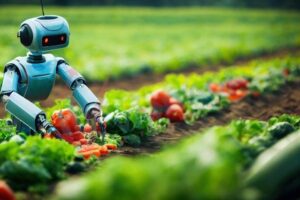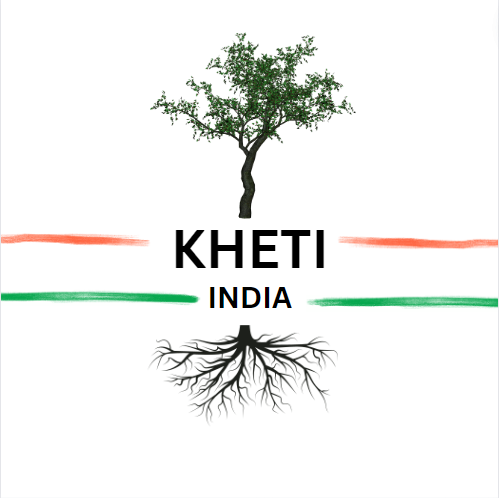AI in Agriculture- Its Objectives and 4 major Risks Associated with it

Agriculture is the word that is so common because it is the cornerstone of human civilization. But still, agriculture faces so many challenges due to the complexity that has been increasing daily and the rise in the world population, making it more complex and challenging for the farmer. When AI in Agriculture comes in with its objectives, it will make a lot of changes in the farmers’ lives with it.
By 2050, we will need 60% more food to feed the world population of 9.3 billion, reports the Food and Agriculture Organization. With that, we are on the verge of depleting our resources and these are some of the critical issues that the agriculture industry is facing currently to deal with AI in agriculture is trending now all around the world due to the objectives of AI in Agriculture. But how AI in Agriculture can be useful in resolving all the current issues in the Agriculture sector.
What are the issues or challenges in Agriculture?
Currently, global agricultural production amounts to approximately 11 billion tons of food but despite that, nearly 1 billion people suffer from hunger and malnutrition because of food wastage, non-proper post-agricultural support to farmers, climate change, no economic support to farmers, pest outbreaks, and several other factors.
- Pest Outbreak: Around 40% of global agricultural productivity which is around $70 billion is lost annually due to the pest attack. The Locusts, Japanese Beetles, Corn Rootworms, Colorado Potato Beetle, etc. are the major pests of crops that annually cause a huge loss to agri crops. Small and marginal farmers even don’t know how and at which stage to protect their crops with which pesticide of how much quality which leads to major crop yield loss.
- Post Agricultural losses: The major agricultural problem is the post-agricultural losses due to several factors and a major part of the crop is lost due to this. There are several factors that a farmer might or might not be aware of and due to that can lose a major part of the crops like poor infrastructure, not having a proper idea of when to harvest the crops for the far away market, and thus leads to the loss of the food items.
- Weeds: There are so many advancements in agricultural practices but still weeds are the major issue of the farmer’s field, which causes a major decline in crop yield and quality loss. There has been a record of 1800 weed species that affect the crops and with that cause a reduction in production of around 31.5% which leads to economic losses of $32 billion annually.
- Soil Quality & Irrigation: Soil quality is depleting day by day, nearly 33% of the soil health has been depleted which is diminishing the quality to grow crops, leading to a loss of $400 billion. With the loss of soil health, there is a further issue with water scarcity.
The global population is projected to reach 9.5 billion by 2050, and thus it is also creating pressure on agriculture to provide sufficient food to the population when the land holding size is also decreasing so in this situation it becomes a must for the farmers to adopt new technologies to grow themselves.
AI is changing the way farmers work, making processes more efficient, sustainable, and productive.
-
Precision Farming:
AI enables precision farming, which involves using technology to optimize crop yields while minimizing resources such as water, fertilizer, and pesticides. Through AI-powered sensors and drones, farmers can collect data on soil moisture levels, crop health, and weather patterns. This data helps them make informed decisions, such as when to irrigate, fertilize, or apply pesticides, leading to higher yields and reduced environmental impact. For example, Indian Startup Niqo Robotics leads Asia in Agriculture spot spraying and commercializes 90,000 acres.
-
Crop Monitoring and Management:
AI-powered systems can monitor crops in real time using satellite imagery, drones, and sensors. These systems analyze data on plant health, growth rates, and pest infestations, allowing farmers to detect issues early and take timely action. For example, AI algorithms can identify areas of nutrient deficiency or pest outbreaks, enabling targeted interventions to prevent crop loss and optimize yields. For Example
-
Predictive Analytics:
AI algorithms can analyze vast amounts of historical and real-time data to make predictions about future crop yields, market prices, and weather patterns. This information helps farmers plan their planting schedules, manage inventories, and make strategic decisions about which crops to grow. By leveraging predictive analytics, farmers can mitigate risks and maximize profits in an unpredictable environment.
-
Autonomous Farming:
AI-powered autonomous vehicles and robots are revolutionizing farming operations, reducing the need for manual labor and increasing efficiency. For example, driverless tractors equipped with AI technology can plant seeds, apply fertilizers, and harvest crops with precision and accuracy. Similarly, robotic systems can weed fields, prune plants, and even pick fruits and vegetables, freeing up human labor for more skilled tasks.
-
Agriculture:
AI is playing a crucial role in promoting sustainability in agriculture by optimizing resource usage and reducing waste. By analyzing data on soil composition, water availability, and climate conditions, AI can recommend sustainable farming practices that conserve resources and minimize environmental impact. Furthermore, AI-powered systems can help farmers transition to regenerative agriculture practices, such as crop rotation and cover cropping, which improve soil health and biodiversity.
Risks of AI in agriculture
While Artificial Intelligence (AI) brings numerous benefits to agriculture, it’s essential to recognize and address potential risks associated with its adoption. Here, we’ll explore some of the key risks in simple terms.
Dependency on Technology:
As farmers rely more on AI technologies for decision-making, there’s a risk of becoming overly dependent on these systems. If AI systems fail or provide inaccurate information, it could disrupt farm operations and lead to financial losses.
Data Privacy and Security:
AI in agriculture relies on collecting and analyzing vast amounts of data, including sensitive information about crops, soil, and farming practices. Ensuring the privacy and security of this data is crucial to protect farmers from cyber threats and unauthorized access.
Digital Divide:
Not all farmers have access to AI technologies due to factors like cost, infrastructure, and technical expertise. This digital divide could widen existing disparities between large-scale commercial farms and smallholder farmers, limiting the benefits of AI adoption for all.
Job Displacement:
The automation of farming tasks through AI-powered robots and drones could lead to job displacement for farm workers, especially those engaged in manual labor. As AI technologies become more advanced, there’s a risk of reducing employment opportunities in the agricultural sector.
